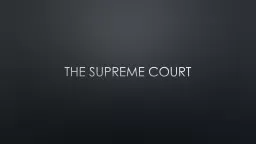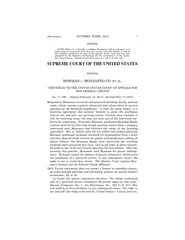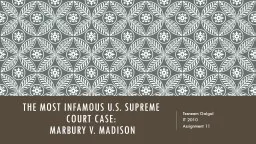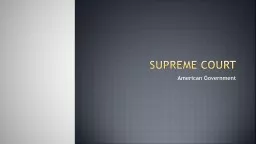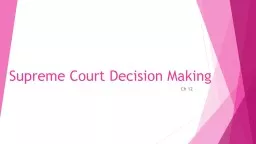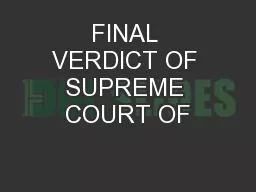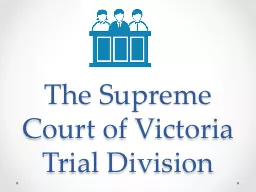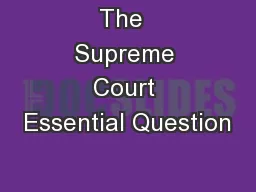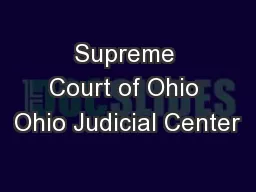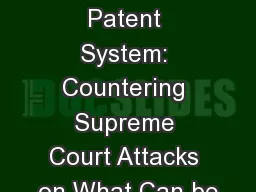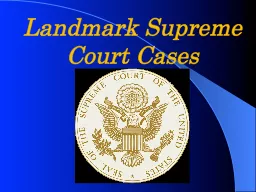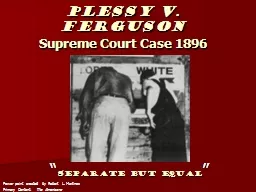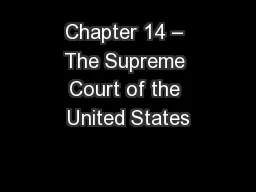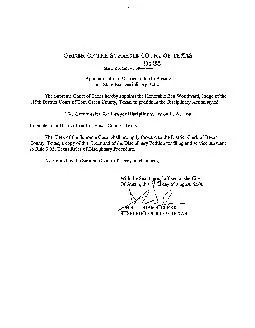PPT-The Supreme Court The Current Court (Well, kind of)
Author : danika-pritchard | Published Date : 2018-11-01
Basic Facts Only court set up by the Constitution Consists of 9 Justices One Chief Justice Eight Associates President Appoints Senate Confirms Term Supreme Court
Presentation Embed Code
Download Presentation
Download Presentation The PPT/PDF document "The Supreme Court The Current Court (Wel..." is the property of its rightful owner. Permission is granted to download and print the materials on this website for personal, non-commercial use only, and to display it on your personal computer provided you do not modify the materials and that you retain all copyright notices contained in the materials. By downloading content from our website, you accept the terms of this agreement.
The Supreme Court The Current Court (Well, kind of): Transcript
Download Rules Of Document
"The Supreme Court The Current Court (Well, kind of)"The content belongs to its owner. You may download and print it for personal use, without modification, and keep all copyright notices. By downloading, you agree to these terms.
Related Documents

